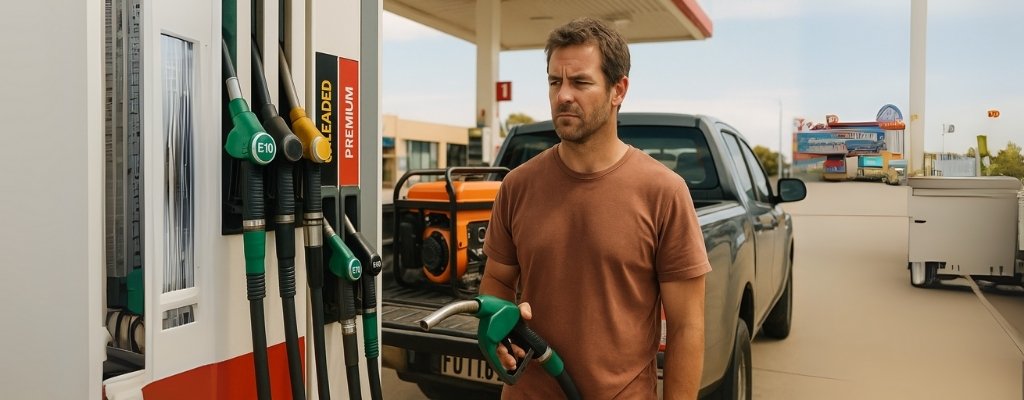
Can I Use Ethanol-Blended Gasoline in My Generator?
Ever stared at the servo pump wondering if E10 will kill your generator? You’re not alone. Yes, you can use ethanol-blended gasoline in many generators—but it depends on the model, storage habits, and maintenance. Keep reading to avoid costly mistakes (and ruined camping trips).

Can I Use Ethanol-Blended Gasoline in My Generators? A Quick Guide
If you own a generator in Australia, you’ve probably seen E10 at every fuel stop and wondered: can I pour this stuff into my genny? It’s a fair question, especially with so many myths and mixed advice floating around. Ethanol-blended fuels like E10 are everywhere, but are they good news for your generator’s lifespan?
Let’s walk through what ethanol is, how it behaves in small engines, the tricks to storing it safely, and what to do if it all goes pear-shaped.
When Was 10% Ethanol Added to Gasoline?
Ethanol-blended fuel isn’t exactly new. In Australia, E10 (10% ethanol, 90% petrol) has been around since the mid-2000s. It was introduced as a way to cut emissions and give fossil fuels a greener edge.
While it works well for most modern cars, generators—especially older ones—can struggle. Ethanol attracts moisture and doesn’t play nice with older rubber or plastic parts.

The Disadvantages and Differences of Ethanol in Generators
Not all fuel is created equal when it comes to your generator.
Ethanol draws in water, which can lead to a problem called phase separation. That’s when water and ethanol sink to the bottom of the tank, causing corrosion, clogged filters, and all sorts of dramas.
Unlike straight petrol, ethanol-blended fuel has a shorter shelf life, especially in humid Aussie conditions. This means more upkeep and less forgiveness if your generator’s sitting idle for months.
Generator Fuel Storage and Maintenance with Stabilizer
If you’re going to run your genny on E10, storage is everything. That’s where fuel stabilisers come in—they keep things fresh and stop phase separation or gunky build-up.
Do You Need Fuel Stabilizer for a Generator?
Yep, you do. If your generator sits for a few weeks (or longer), stabiliser is your best mate. Ethanol starts to degrade within 30 days, and a stabiliser can help extend fuel life while protecting vital parts.
The Best Fuel Stabilizer for a Generator
Look for brands like STA-BIL or Penrite—both make stabilisers that work with ethanol. Just check the label for E10 compatibility. A little bit goes a long way, so measure it out and mix it in properly.
How Long Can You Store Gas in a Generator?
Even with stabiliser, don’t expect miracles. Ideally, you shouldn’t leave fuel sitting in your generator for more than 3 to 6 months.
Without a stabiliser? Try to use it up within 30 days. Always write the fill date on your container so you don’t lose track.
Troubleshooting and Removing Old Gas in Generators
Forgot to drain the tank or add stabiliser? Don’t stress—it’s fixable.
Old Gas in a Generator
Signs of stale fuel include rough starts, poor running, or the thing not starting at all. If it smells more like nail polish remover than fuel, it’s time to take action.

How to Remove Gas from a Generator
-
Switch off and let the generator cool.
-
Use a siphon pump or drain plug to empty the tank.
-
Dispose of old fuel safely—check your local council’s guidelines.
-
Clean or swap out the fuel filter.
-
Refill with fresh fuel (plus stabiliser), and run it to flush any gunk.
If things are still off, a quick carburettor clean may be in order.

How Often Should You Run a Gas Generator?
To keep your generator happy, run it once a month for 20–30 minutes. That keeps the fuel moving and prevents the system from clogging up.
Plug something in while it’s running—a fan, a kettle—just to simulate real use. It also helps top up the battery and keeps seals from drying out.


